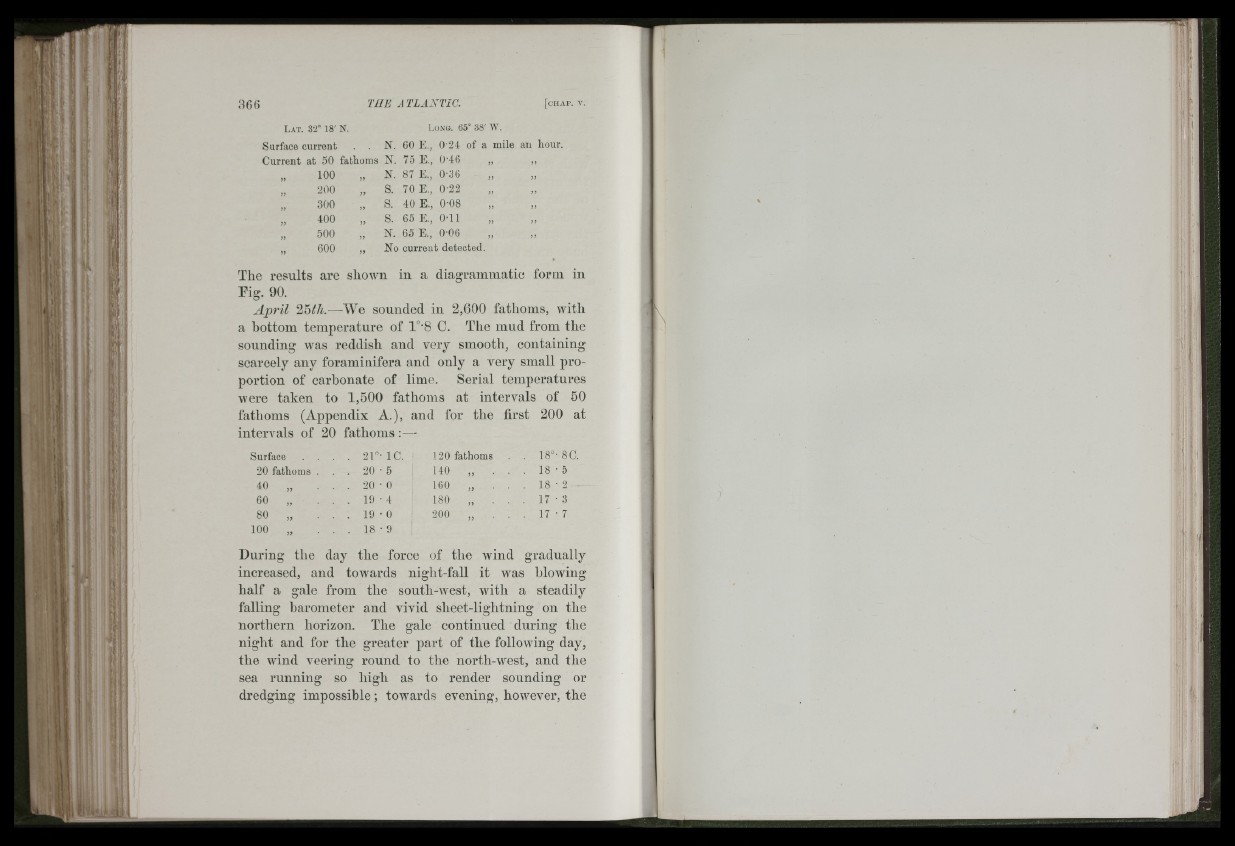
Lat. 32° 18' N.
Surface current
Lonu. 65° 38' W.
N. GO E., 0-24 of a mile an hour.
Current at 50 fathoms N. 75 E., 0-46
100 J) N. 87 E., 0-;J6
200 >> S. 70 E., 0-22
300 S. 40 E., 0-08
400 s. 65 E., O' l l
500 )) K 65 E., 0-06
600 No current detected.
The results are shown in a diagrammatic form in
Eig. 90.
April 2bth.—^We sounded in 2,600 fathoms, with
a hottom temperature of l°-8 C. The mud from the
sounding was reddish and very smooth, containing
scarcely any foraminifera and only a very small proportion
of carbonate of lime. Serial temperatures
were taken to 1,500 fathoms at intervals of 50
fathoms (Appendix A.), and for the first 200 at
intervals of 20 fathoms: —
Surface . . . . 2E- 1C. 120 fathoms . 18°' 8C.
20 fathoms . . . 2 0 - 5 140 . 18 • 5
40 „ . 20 • 0 160 J) . 1 8 - 2
60 „ . 1 9 - 4 180 . 1 7 - 3
80 „ . 1 9 - 0 200 . 1 7 - 7
100 „ . . . 1 8 - 9
During the day the force of the wind gradually
increased, and towards night-fall it was blowing
half a gale from the south-west, with a steadily
falling barometer and vivid sheet-lightning on the
northern horizon. The gale continued during the
night and for the greater pa rt of the following day,
the wind veering round to the north-west, and the
sea running so high as to render sounding or
dredging impossible; towards evening, however, the
I